
views
Do you need to take apart your saddle?
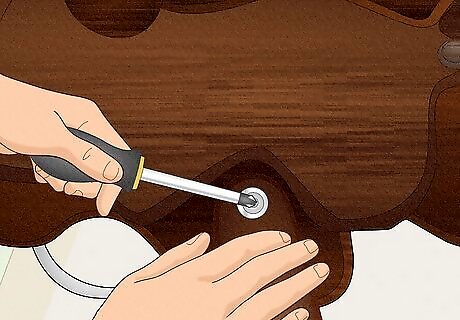
Yes, and you’ll need a screwdriver and nippers to do so. Take off the girth, as well as the stirrups and conches. It may also help to loosen the back and side jockeys before you start cleaning and restoring. Use the screwdriver and nippers to take out any nails in the leather. If any parts of your saddle are broken, make sure to replace them before using your equipment again.
How do you clean an old saddle?
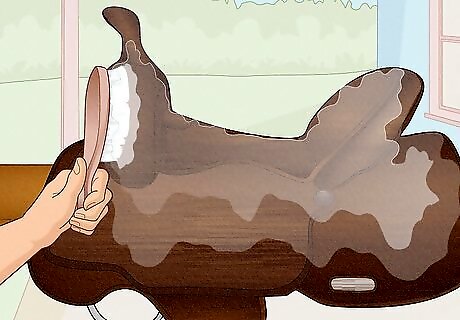
Wash it with traditional soap and saddle soap. Soak down the saddle with a hose and clean off the surface with a soft-bristled brush and bar soap. Rinse off the suds with water, and wait for your saddle to air-dry. Then, clean it off again with saddle soap and a toothbrush, so you can reach any tricky, difficult-to-clean spots. Murphy’s Saddle Soap and any other glycerin-based saddle soap work great for this.
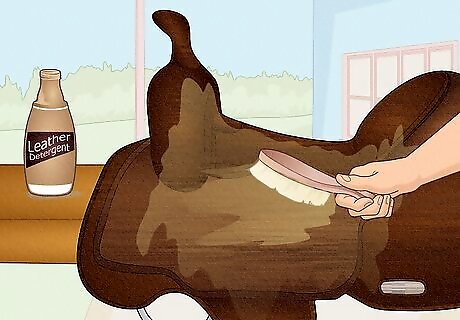
Use leather detergent concentrate if regular soap doesn’t get the job done. Regular, glycerin-based soap might not clean your saddle if your equipment is really old and worn out—that’s okay! Dilute your leather detergent concentrate and scrub it onto the leather with a soft-bristled brush. Once you’ve cleaned off the entire surface, rinse it off with clean water. Follow the diluting instructions on your cleaning product. Some products recommend mixing 2 to 4 fl oz (59 to 118 mL) of leather detergent concentrate with 1 US gal (3.8 L) of cold water.
How do you restore hard or brittle leather?
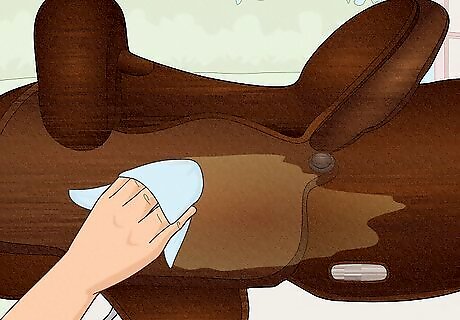
Treat the leather with oil. Heat up leather oil on your stovetop until it’s around 100 to 110 °F (38 to 43 °C). Spread the oil over the surface of the saddle and leave it be for several hours. If the leather still feels dry, apply a little more oil to the tack. Don’t apply too much oil at once! You can always use more later, if needed. Double-check the instructions on your leather oil before using it to condition your tack.
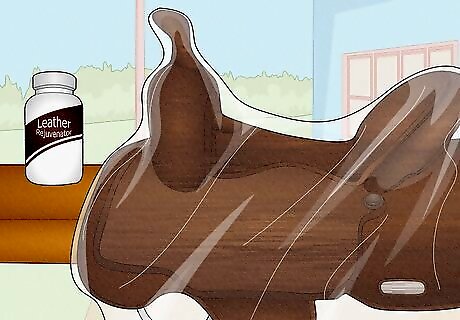
Use a leather rejuvenator. Some professionals like using leather rejuvenators to restore tough leather. Sponge down both sides of the leather with lukewarm water; then, cover the area in plastic wrap for 2-6 hours. Peel away the plastic and coat the leather with the rejuvenator. Re-cover the leather with plastic, and let it sit for 1 day. Afterwards, you can remove the plastic and let your saddle air-dry. Don’t apply leather rejuvenator to any metal parts of your saddle, or else they might get damaged. Leather rejuvenator dries best in a 60 to 70 °F (16 to 21 °C) area with 40-60% humidity.
Can I fix cracked leather?
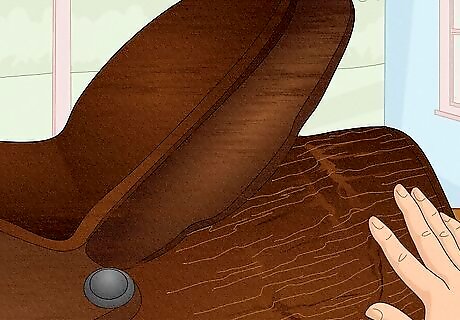
That may be tempting, but it’s not a good idea. Cracks in leather happen when the proteins within the leather shrink and break apart. Because of this, there’s no way to restore those parts of your leather back to their former glory. You’re better off getting new equipment if you’re looking to ride.
What if the saddle is moldy?
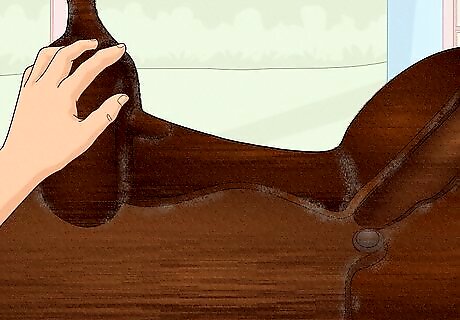
Take it apart and give it a good cleaning. Combine 1 part of white vinegar into a container with 2 parts water. Dip a clean rag and toothbrush into the mixture and clean the saddle. Let your saddle air-dry, and then wash it with non-glycerine saddle soap. Then, treat your saddle with balsam or dressing to make it supple. It’s best to wash moldy tack outside, so the spores don’t spread to anything else.

















Comments
0 comment